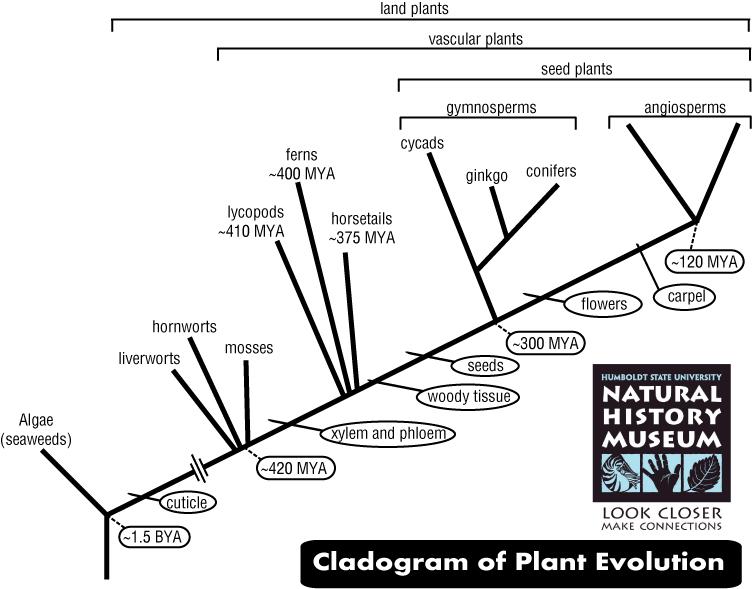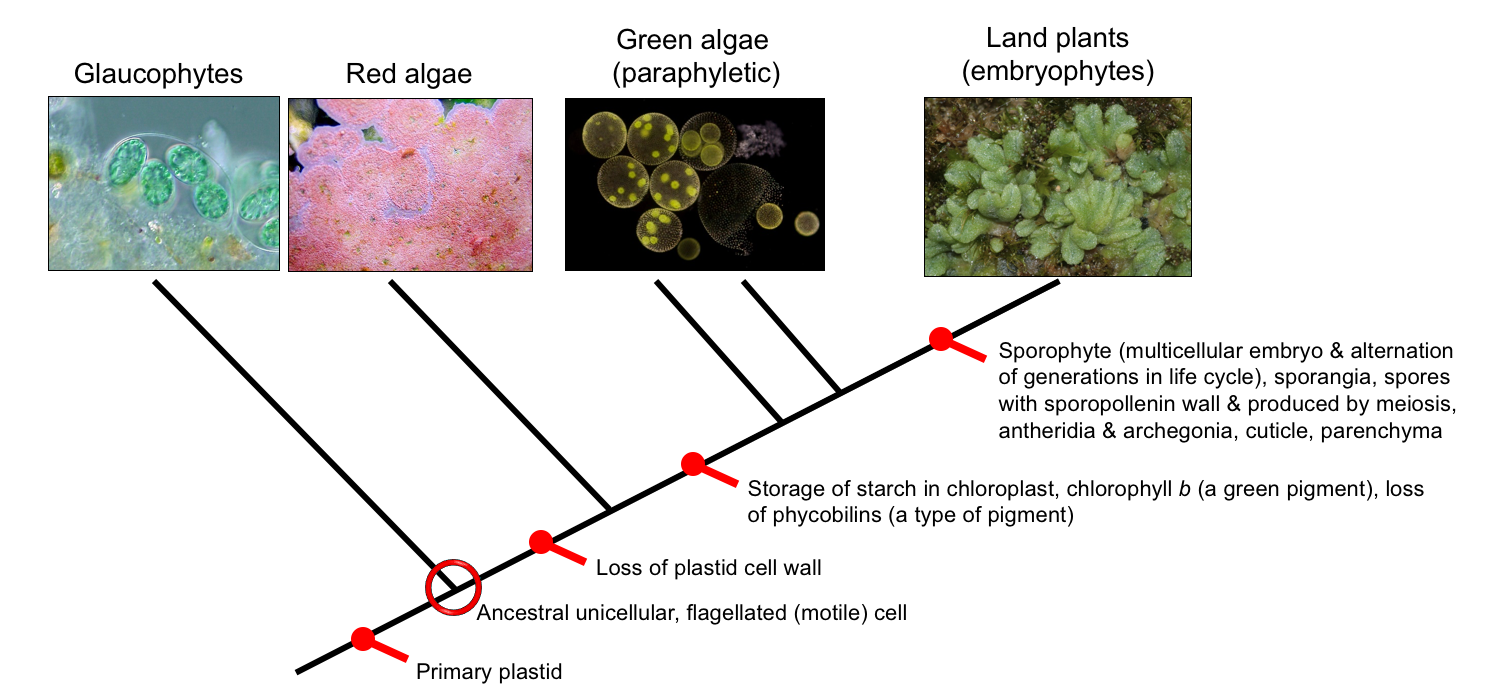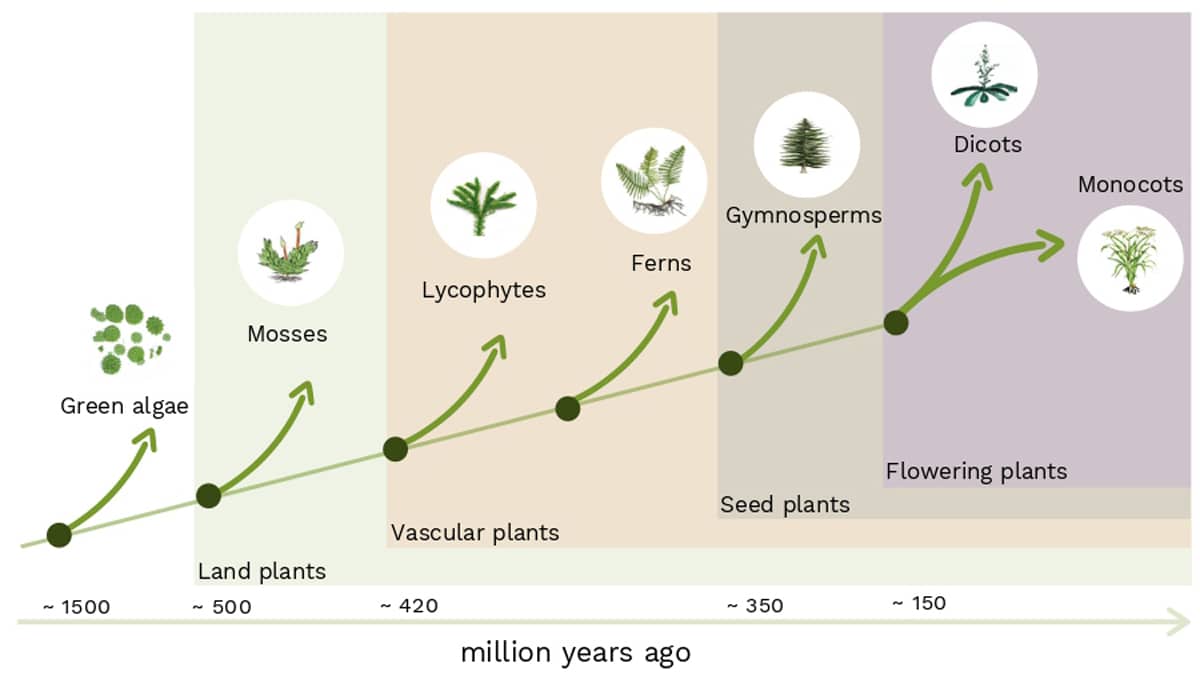The evolution of land plants along with some help from mud ultimately gave rivers the sinuous narrow channels islands muddy floodplains and the species-rich corridors associated with modern. Etc and fish in order to be more environmentally friendly.

Evolution Of Land Plants Natural History Museum
The thing that set these early plants apart from algae was their differentiated male and female.

. Plant roots are a powerful erosive force and the researchers believe these plants could have. The first group of plants that made it on land are best known as BRYOPHYTES. All plants that grow on land are descended from green algae which tends to grow on damp surfaces like rocks and wood exposed to the elements.
The land plants arose from the green algae and together land plants and green algae are sometimes called Viridiplantae from the Latin viridis green. Some environmentalists believe that people should eat less red meat cows sheep goat etc and instead eat white meat from chickens turkeys. A the dominant generation b dependent upon the gametophyte.
Like algae these early plants were highly dependent on water for structure hydration and even reproduction. Therefore until dry land was also colonized by animals no predators threatened plant life. They need relatively moistwet environments to survive.
Many key characteristics of land plants also appear in a variety of algal clades. -Terrestrial land plants are believed to have arisen from these Share unique family of enzymes Phragmoplasts for cell division Similar cell walls Similar cpDNA and nuclear DNA-First algal like plant to have protected embryo egg enclosed in a jacket of cells-Have rudimentary apical cells precursor to apical meristem-Still aquatic. Researchers have identified a lineage of green algae called charophyceans as the closest relatives of land plants.
Consequently in the first land plants the alternating generations were isomorphic and independent but gradually the sporophyte became attached to the gametophyte with reduction in its complexity. D both a and c. NON VASCULAR PLANTS SEEDLESS PLANTS GYMNOSPERMS ANGIOSPERMS.
The study also finds the earliest land plants may have had roots. In turn plants developed strategies to deter predation. This situation changed as animals emerged from the water and fed on the abundant sources of nutrients in the established flora.
Land plants are believed to have evolved from algae that came from oceans to freshwater to wet-dry coatlines and developed into fernsshrubs. B ferns c green algae. Their sperm cells needed water to swim through in order to reach egg cells.
Concept 291 Land plants evolved from green algae. In the bryophytes the sporophyte is. C able to produce all of its own nutritional requirements.
Land plants are believed to have evolved from algae that came from oceans to freshwater to. In a recent Science article two evolutionists consider land plants embryophytes to have evolved from stoneworts charophyte algae1 A spore is a haploid single unpaired chromosome which is a single or multicellular reproductive structure produced by certain species eg fungi that detaches from the parent and gives rise to a new individual. The first land plants.
The main candidates for the living green algal group most closely related to land plants are the stoneworts order Charales order Coleochaetales and the conjugating green algae order Zygnematales. Third land plants evolved before land animals. Land plants are believed to have evolved from.
From spines and. Early land plants reproduced with spores that would swim with little whipping tails called flagella through moist soil and find the female organs. Origin of Land Plants Data from fossils morphology development biochemistry and molecular phylogenetics provide complementary insights into the nature of the earliest land plants and their shared ancestry with close algal relatives.
Ancestors of green plants began to colonise the land about 500 million years ago and it is generally accepted that they evolved from streptophyte algae a. Land plants evolved from a group of green algae perhaps as early as 850 mya but algae-like plants might have evolved as early as 1 billion years ago. Plants are multicellular eukaryotic photosynthetic autotrophs.
Therefore the land plant ancestors would have been green algal organisms with a diplo-haplontic life cycle sporic meiosis prior to land invasion. The researchers found that land plants had evolved on Earth by about 700 million years ago and land fungi by about 1300 million years ago much earlier than previous estimates of around 480 million years ago which were based on the earliest fossils of those organisms. All land plants share a common ancestor.
They have a waxy cuticle and pores that regulate water evaporation. It is believed that the earliest plants evolved from a photosynthetic protist that resembled green algae. Land plants are believed to have evolved from a mosses b ferns charophytes d fungi Sperm find their way to the archegonium a by swimming b due to a chemical gradient diffusing from the archegonium c as a result of sucrose being released during the breakdown of the neck canal cells of the archegonium d by all of the above 2.
Liverworts and mosses utilize which of the following pigments for. From what is it believed land plants evolved. Learn more about the evolution of green algae into.

Origin Of Land Plants Digital Atlas Of Ancient Life

When Plant Roots Learned To Follow Gravity Tech Explorist

Summary Of Land Plant Phylogeny The Evolutionary Relationships Of The Download Scientific Diagram

Plant Evolution Landmarks On The Path To Terrestrial Life Vries 2018 New Phytologist Wiley Online Library
0 Comments